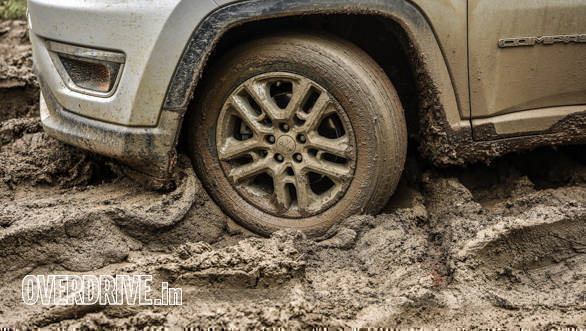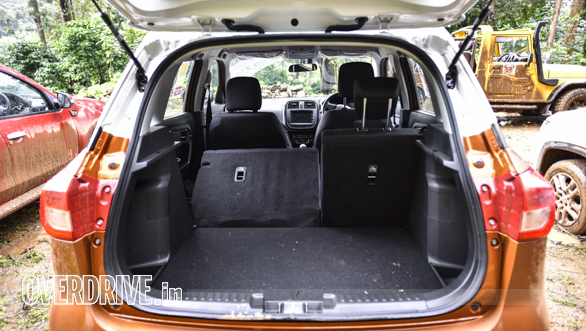Mandatory information from auto manufacturers
Recently while working on some roadtest stories, one thing struck me how difficult it is to get some specifications and information about vehicles. For example, ground clearance. This is a vital dimension and critical parameter of performance on India roads, especially in an SUV. As per an amendment in certain rules last year, ARAI (Automotive Research Association of India), now measures the ground clearance with the maximum load carrying capacity, or approved vehicle gross weight. Earlier it was calculated in the unladen state. Due to this alteration in the method of measurement, the actual ground clearance has not changed, only the figures on paper are different. To put it simply, if a vehicle has a ground clearance of say 200mm and then you load it with its approved vehicle gross weight, the suspension obviously compresses and the lowest part of the vehicle in relation to the ground surface will be reduced by about 20 per cent, making the measurement 160mm or so. So which is the correct figure? As far as I know, the global trend is to measure unladen vehicles, just like we did in our country before this new rule. As a result, some manufacturers are now circumspect about sharing the ground clearance and many have stopped putting it in their brochures, websites, etc. A few in fact continue giving out the earlier figures. This leaves us struggling to get accurate information.

There is also the fact that some vehicles (like a few of the more expensive SUVs we drove in our special feature story) have adaptable air suspension that allows the height of the vehicle to be lowered or raised. How is this to be measured? Consequently some manufacturers are reluctant to share this data too! Therefore, I would really like to know the reasoning behind the change in ARAI rules? Can someone please explain, and the benefits, if any? Or is it just that we do not want to follow global norms and have a set of regulations and measures specifically for our country? Also, while we are on this, can anyone please tell me if there is any law that makes it mandatory for manufactures to share such information of their vehicles, and if yes, then where do they need to publish it? Similarly, ARAI certifies the mileage or fuel efficiency of a vehicle as per CMVR (Central Motor Vehicle Rule). Most manufactures generally share this information, but a few don't. What is the law on this?

Then there are things like fuel tank capacity, vehicle weight, spare wheel size, etc. Or approach and departure angles and wading depth, all this can be critical for a customer who intends to use his vehicle to go off-roading. What about suspension layout and architecture, chassis construction, engine bore and stroke, compression ratio, gear ratios, vehicle track, total interior volume, front and rear headroom, legroom, shoulder space, windscreen washer fluid container capacity, and other such things? How do you get all these facts and figures? Is all this information purely voluntary for a manufacturer? Being in the business of evaluating vehicles, we often just pick up the phone and speak to the manufacturer and get the data we need. But at times, there are manufacturers who are not forthcoming. What does one do in such a situation?

Given all of the above and the increase in sales of vehicles, I think it's high time we have a list and a law of mandated information that a manufacturer needs to share. Where this information is to be made available or displayed, should also be fixed. Anyone buying a vehicle, or even those like us test driving them, should have a verified source of detailed and accurate information on the vehicle. What should also be decided is the kind of information a manufacturer needs to share. Just look at some of the technical specifications available on a vehicle brochure or the manufacturer's website. There is no standard format; it varies from vehicle to vehicle and from one manufacture to the other. While strong points and highlights of a vehicle are willingly publicised, the weaknesses or shortcomings are just glossed over or simply not mentioned at all!
There is no doubt in my mind that a list of mandated vehicle information from manufacturers is well overdue. What needs to be included is something that can be discussed and decided. Obviously no manufacturer will willingly share what they consider 'secret information' or something that their rivals can exploit or learn and earn from. So the best option is to engage with manufacturers and get them to agree to what all can, and should be common knowledge. The right to information of conscientious consumers should, of course, be a priority. But who will get this done?

In case any of our authorities are listening, I will be happy to sit with the manufacturers along with some of my more knowledgeable auto journalist colleagues, and help draw up this list of mandatory vehicle information. The proper authorities vested with the power, can then pass a law on the compulsory data that needs to be shared. In the long run, the consumers will benefit and so will the vehicle makers. But will it happen? Your guess is as good as mine, because, oh darling, yeh hai India.














